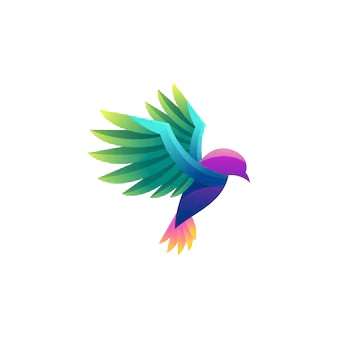
The UK is home to 14 species of finches, each with unique characteristics and habitats. These birds have a rich history, once popular as cage birds, but today they are protected by law. This guide provides an overview of these finches, including their appearance, diet, and conservation status.
1. Chaffinch
- Scientific Name: Fringilla coelebs
- Lifespan: 3 years
- Size: 14.5 cm (5.71 inches)
- Weight: 18-29 g (0.6-1.0 ounces)
- Wingspan: 24.5-28.5 cm (9.65-11.22 inches)
- Population: Stable
- Status: Green
Chaffinches are common across the UK. Males have orange cheeks and breasts with a grey head, while females are mostly brown. They feed on seeds, fruits, and insects.
2. Bullfinch
- Scientific Name: Pyrrhula pyrrhula
- Lifespan: 2 years
- Size: 16 cm (6.3 inches)
- Weight: 21 g (0.74 ounces)
- Wingspan: 26 cm (10.24 inches)
- Population: Stable
- Status: Amber
Bullfinches are known for their striking red bodies in males and brown in females. They primarily eat buds, tree shoots, and flowers.
3. Brambling
- Scientific Name: Fringilla montifringilla
- Lifespan: 2 to 5 years
- Size: 14-17 cm (5.5-6.7 inches)
- Weight: 20-25 g (0.7-0.9 ounces)
- Wingspan: 24-27 cm (9.4-10.6 inches)
- Population: Stable
- Status: Green
Bramblings have grey-blue heads and orange breasts. They are winter visitors from Scandinavia, occasionally breeding in the UK.
4. Crossbill
- Scientific Name: Loxia curvirostra
- Lifespan: 2-3 years
- Size: 16-18 cm (6.3-7.1 inches)
- Weight: 36-66 g (1.27-2.33 ounces)
- Wingspan: 25-30 cm (9.8-11.8 inches)
- Population: Stable
- Status: Green
Crossbills have unique crossed beaks, perfect for extracting seeds from conifer cones. Males are red, while females are green and brown.
5. Scottish Crossbill
- Scientific Name: Loxia scotica
- Lifespan: 2-3 years
- Size: 14-16 cm (5.5-6.3 inches)
- Weight: 32-48 g (1.13-1.69 ounces)
- Wingspan: 24-27 cm (9.4-10.6 inches)
- Population: Small, estimated at several thousand
- Status: Amber
The Scottish Crossbill is endemic to North-East Scotland, feeding primarily on pine seeds.
6. Parrot Crossbill
- Scientific Name: Loxia pytyopsittacus
- Lifespan: 2-3 years
- Size: 18-20 cm (7.1-7.9 inches)
- Weight: 38-54 g (1.34-1.9 ounces)
- Wingspan: 29-33 cm (11.4-13 inches)
- Population: Occasional vagrant, small local population in Scotland
- Status: Not assessed
Larger and sturdier than other Crossbills, the Parrot Crossbill occasionally visits the UK, feeding on pine seeds and insects.
7. Twite
- Scientific Name: Linaria flavirostris
- Lifespan: 2-4 years
- Size: 12-13 cm (4.7-5.1 inches)
- Weight: 11-20 g (0.39-0.71 ounces)
- Wingspan: 20-22 cm (7.9-8.7 inches)
- Population: Declining in some areas
- Status: Red listed
Twites are brown with darker streaks and a pinkish rump in males. They primarily eat seeds.
8. Linnet (Housefinch)
- Scientific Name: Linaria cannabina
- Lifespan: 2-8 years
- Size: 13-14 cm (5.1-5.5 inches)
- Weight: 18-25 g (0.63-0.88 ounces)
- Wingspan: 20-25 cm (7.9-9.8 inches)
- Population: Stable, but slightly declining
- Status: Red listed
Linnets have red spots on their forehead and chest in males, with females more brown. They eat seeds and small insects.
9. Siskin
- Scientific Name: Carduelis spinus
- Lifespan: 2 years
- Size: 12-14 cm (4.7-5.5 inches)
- Weight: 11-18 g (0.39-0.63 ounces)
- Wingspan: 20-24 cm (7.9-9.4 inches)
- Population: Stable and widespread
- Status: Green
Siskins have yellow-green bodies with black crowns and streaks. They feed on seeds from conifers, alders, and birch, as well as insects.
10. Greenfinch
- Scientific Name: Chloris chloris
- Lifespan: 2 years
- Size: 15 cm (5.9 inches)
- Weight: 20-32 g (0.71-1.13 ounces)
- Wingspan: 25-29 cm (9.8-11.4 inches)
- Population: Declining, especially in urban areas
- Status: Red listed
Greenfinches are yellow-green, with females having more cream and brown feathers. They feed on seeds and insects, with a preference for sunflower seeds.
11. Lesser Redpoll
- Scientific Name: Acanthis cabaret
- Lifespan: 2 years
- Size: 11-12 cm (4.3-4.7 inches)
- Weight: 10-17 g (0.35-0.6 ounces)
- Wingspan: 18-21 cm (7.1-8.3 inches)
- Population: Stable
- Status: Green
Lesser Redpolls have a red dot on their head and a darker body. They feed on birch and alder seeds, often hanging upside down to reach them.
12. Common Redpoll (Mealy Redpoll)
- Scientific Name: Acanthis flammea
- Lifespan: 2-9 years
- Size: 12-14 cm (4.7-5.5 inches)
- Weight: 14-20 g (0.49-0.71 ounces)
- Wingspan: 22-25 cm (8.7-9.8 inches)
- Population: Occasional vagrant
- Status: Amber
Larger and paler than the Lesser Redpoll, the Common Redpoll is a winter visitor. They feed on birch, alder, and spruce seeds, and insects.
13. Hawfinch
- Scientific Name: Coccothraustes coccothraustes
- Lifespan: 2-5 years
- Size: 16-18 cm (6.3-7.1 inches)
- Weight: 46-70 g (1.62-2.47 ounces)
- Wingspan: 29-33 cm (11.4-13 inches)
- Population: Declining in most areas
- Status: Red listed
Hawfinches are large with a sizable beak, blending well into their environment. They feed on seeds, buds, and shoots.
14. Goldfinch
- Scientific Name: Carduelis carduelis
- Lifespan: 2 years
- Size: 12-13 cm (4.7-5.1 inches)
- Weight: 14-18 g (0.49-0.63 ounces)
- Wingspan: 21-25 cm (8.3-9.8 inches)
- Population: Stable and widespread
- Status: Green
Goldfinches have a red face, white and black head, black wings with yellow, and a brown and cream body. They are common and feed on seeds, often visiting bird feeders.
Conclusion
The UK’s finches, from the common Chaffinch to the rare Scottish Crossbill, play an essential role in the ecosystem. While some species are stable, others face challenges and declining populations. Conservation efforts are crucial to ensure these beautiful birds continue to thrive.
